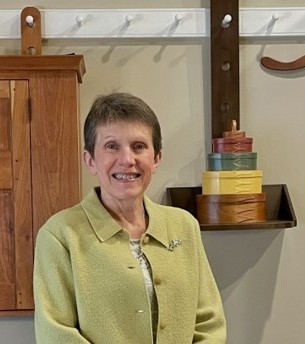A central question runs through professor of history and a historical geographer Dr. Carol Medlicott’s research, and it has since she worked on her PhD thesis. That question is: how do communities with a shared identity create a sense of unity despite being separated by land and space?
She originally asked that question about early American expansion when the country’s border was pushing the frontier westward, and she has continued asking it since becoming an expert in Shaker history.
The Shakers, also known as United Society of Believers in Christ’s Second Appearing, are a Christian Protestant sect who immigrated to the states from England. They lived in shared communities, practiced equality across race and gender, and held song and dance at the heart of their religious activities.

Medlicott said she views her research on the Shakers as a microcosm of her queries about shared identity across space. Shaker communities in the U.S. first settled east of the Appalachian Mountains with communities settled west of the mountains coming later in places like Kentucky, Ohio and Indiana.
“The Chosen Pleasant Hill: Shakers of the Kentucky Bluegrass” is a deepdive into the Pleasant Hill Shaker community, which is located about 25 miles southwest of Lexington and thrived for over a century beginning around 1805. The land where the community once lay is preserved today by the Shaker Village of Pleasant Hill, which keeps the community’s land, structures and artifacts open to the public for education. The village’s museum approached Medlicott and Christian Goodwillie–another Shaker scholar–asking them to conduct research to enhance and modernize the site’s museum exhibits.
A trove of primary sources dating back to the Shaker’s occupation of Pleasant Hill are still held at the village, Medlicott explained. She and Goodwillie weeded through that collection to reconstruct an idea of what life in the village was like. The book is organized by themed chapters that explore various dimensions of Shaker life, such as theology, style of worship, ethnic diversity and much more.
“We stuck with this thematic treatment, because we wanted it to serve as kind of an introduction, kind of a springboard into deeper study of Pleasant Hill,” said Medlicott.
The original plan was for the partners’ research to aid in creating an improved museum experience for visitors, but Goodwillie said the volume of information they uncovered and the gap in time since a book on Pleasant Hill has been published lent itself to a book. The book now serves as bedrock knowledge meant to stoke interest in the village’s past and stitched together with primary sources that can be traced back to the network of Shaker collections in Kentucky, Ohio and Indiana.
When asked how the question of shared identity across space guides thorough investigation of a single community, Medlicott responded that each community has distinctions, but the connections between the constellation of communities can be seen through things like intentional selection of leadership, sharing and creating music, and wearing similar clothing.
“There’s this sense that yes, they did strive for unity, they strive for consistency, they strive for to be sort of all the same, but yet there were individual differences and exploring the tension between the difference on the one hand, the unity on the other is something that really kind of runs through my work. So it’s not a question that will ever really be answered. You just kind of continue to find more detail that enriches this,” she said.

